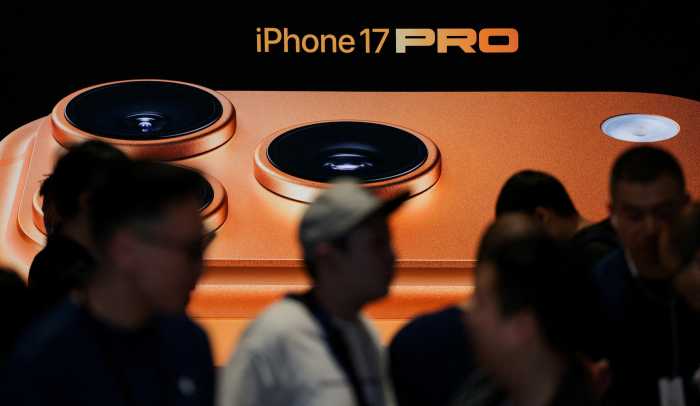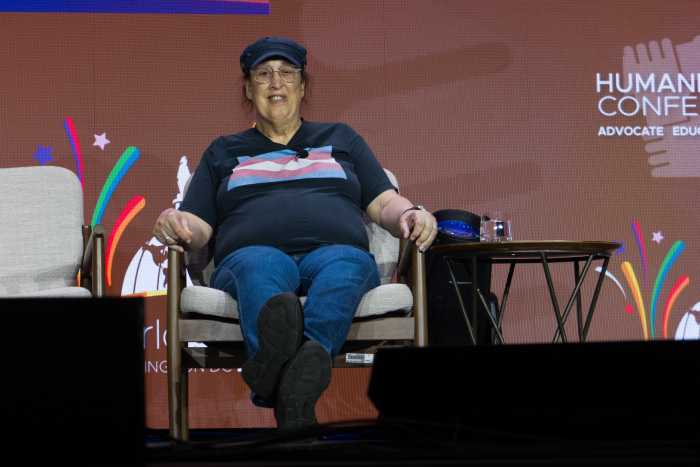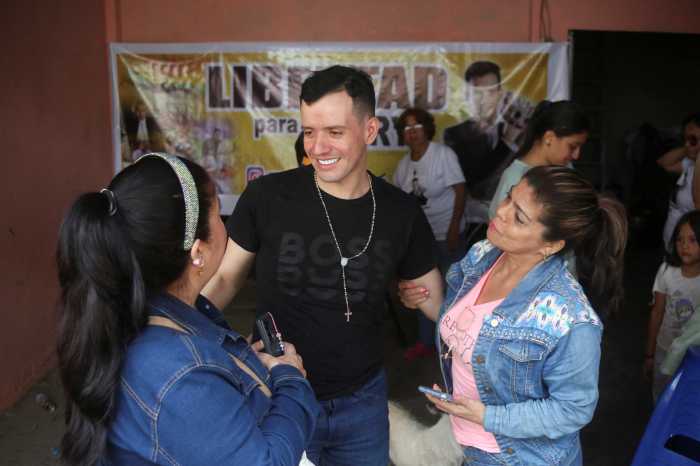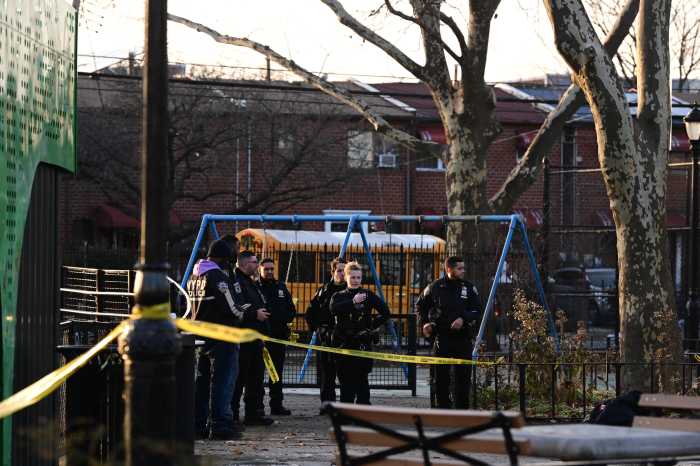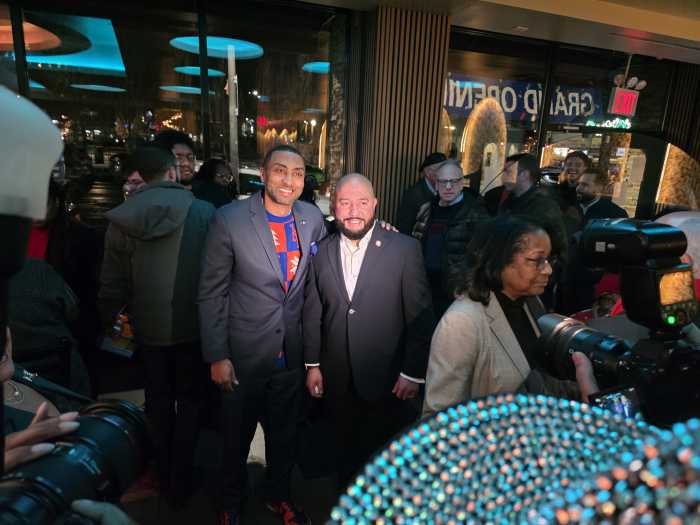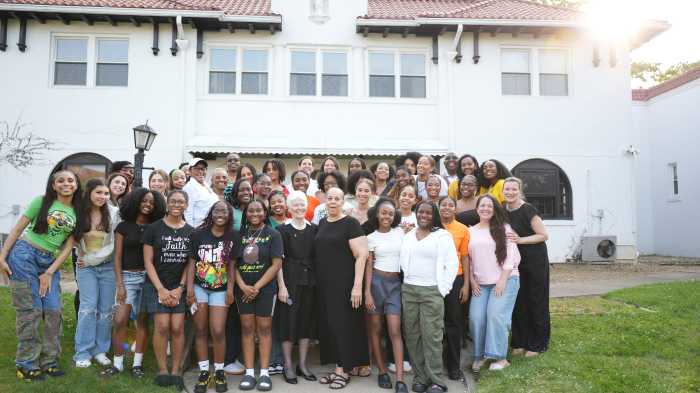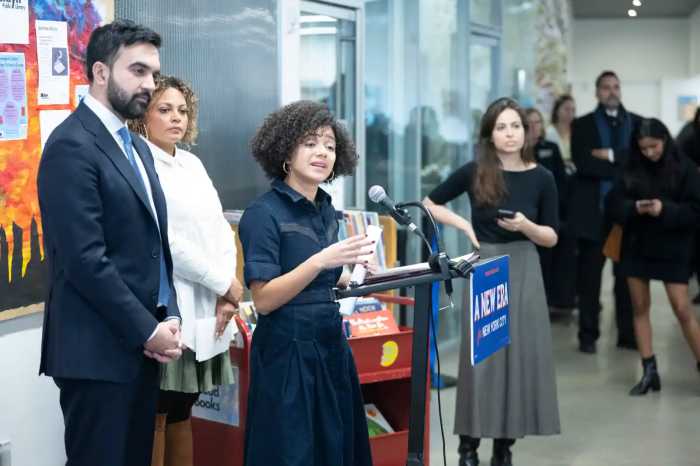BY DUNCAN OSBORNE | Speaking at a July 19 vigil held to mark the one-year anniversary of the hanging of two Iranian teenage boys, Reverend Pat Bumgardner, pastor of the Metropolitan Community Church of New York, a gay denomination, said, “These boys were not pedophiles. They were kids who found love… They were victims of a hate crime and of state-sanctioned murder.”
That suggests that not only did the two boys—Ayaz Marhoni, 18, and Mahmoud Asgari, whose age was given as 16 or 17 in 2005 press reports—have a relationship, but it imbues that relationship with romantic feelings and intimacy.
The two boys were killed by the Iranian government on July 19, 2005. The gruesome photos of their hangings circulated globally on the Internet. At least 27 vigils were held worldwide two weeks ago to mark the killings.
In the debate that preceded the vigils, Scott Long, director of the Lesbian, Gay, Bisexual and Transgender Rights Project at Human Rights Watch (HRW) and a leading critic of the vigils, questioned whether the two youths were gay as that identity is understood in the West.
The two views could not be further apart.
Call it the fog of debate, but as gay activists and human rights groups argued about how to address Iran’s treatment of queers, the fight was concerned with what happened in Iran a year ago, how to speak about such events, who may speak, and even how to understand them. And things that had been ambiguous became facts; what were facts took on nuances and shadings.
The vigils were hotly contested. Activists saw themselves as standing with gay Iranians and they believed the two boys were killed simply because they were gay. The photos of the hangings were cited as evidence of Iran’s continued attacks on gay people there.
Some human rights groups saw the vigils as linking efforts to aid gay Iranians to a single questionable case and they noted that the two may have been hanged for raping a 13-year-old boy at knifepoint.
To say, as Bumgardner did, they “found love” is to present Marhoni and Asgari as two young, gay men who, either bravely or foolishly, pursued a relationship in a very hostile society. In this representation, they are our Romeo and Juliet, our star-crossed lovers, and a symbol of the bigotry faced by queers everywhere.
It does appear that the two knew each other, but the nature of their relationship remains unclear.
In a July e-mail that was widely distributed, Afdhere Jama, editor of Huriyah, a magazine for gay Muslims, wrote that three people he was in touch with had seen the two together at a gay funeral in 2003 in Mashad, the city where the hangings took place.
“[A]ccording to these (three) people, Ayaz and Mahmoud were clearly ‘together.’ Also, one of the sources knows the family of Ayaz—hence knows more about the couple,” Jama wrote.
In an e-mail, Long wrote that this meant only that the two were at a “party” and it neither proved that they were lovers nor did it refute the rape charge. Human rights groups, such as HRW, hold to a very high standard of proof in their work.
While never endorsing the rape charge, Long cited “a detailed account” in Quds, an Iranian newspaper, that supported the rape allegation. Jama countered that Quds is “a government-controlled news agency” that only publishes news that is “acceptable to the government.”
Long aggressively argued against the vigils and for an approach to Iran that was grounded in facts. As the debate grew heated, Long widened his critique to include Jama and Doug Ireland, a journalist whose work on the Iranian situation has appeared in Gay City News.
In one e-mail Long wrote, “I have the greatest respect for Afdhere and absolutely no reason to doubt anything he says.” In another, responding to questions from Gay City News, he wrote “I respect Huriyah magazine.”
This respect did not prevent him from charging that Jama had “completely made up” a story about abuses in Egypt and that Jama’s sources for the Mashad gay party story were dubious.
Of Ireland, Long wrote, “I have, I should say, great respect for Doug Ireland’s reporting in the past. Over the last year, he has conducted individual interviews with Iranian survivors of torture and abuse which are authentic and compelling.”
But in an editorial in Gay City News, Long charged that Ireland’s reporting had been “deeply irresponsible.” The journalist had made errors and claimed, incorrectly, that the Iranian government was engaged in a “massive pogrom” and an “intensifying crackdown” against queer Iranians, according to Long.
Responding by e-mail to a query from Gay City News, Long wrote, “Two sources told us, admittedly anecdotally, that if anything prosecutions for morals crimes have gone down since his inauguration,” referring to Mahmoud Ahmadinejad, the Iranian president who assumed power last year and is affiliated with conservative Islamic clerics there.
But in a November 2005 press release, HRW noted a number of arrests, prosecutions, and executions of gay Iranians.
“These abuses have created an atmosphere of terror for lesbians, gays, bisexuals, and transgender people throughout Iran,” an HRW staffer said in the release.
“’These abuses’ was in reference to three cases which were clearly documented through direct interviews as well as an unequivocal and detailed press account,” Long wrote to Gay City News. “All took place before summer 2005. That is completely different from saying that there is a massive pogrom going under Ahmadinejad.”
What defines a “massive pogrom” and an “intensifying crackdown” versus an “atmosphere of terror” is unclear.
Then in a March 2006 letter to the immigration minister in the Netherlands, Long wrote that in the Middle East “Iran is distinguished by the overt severity of the penalties it imposes on consensual, adult homosexual conduct. Sodomy or lavat… is punishable by execution.”
In his letter, Long wrote that HRW had interviewed gay Iranians and said, “Their accounts largely confirm the picture of a society where the social stigma, and attendant violence, attached to homosexual conduct is high and where police and authorities repeatedly target and persecute suspected homosexuals in the name of social cleansing.”
In the debate even Long’s status as a human rights advocate as well as that of Paula Ettelbrick, executive director of the International Gay and Lesbian Human Rights Commission, were questioned. In an e-mail distributed prior to the vigils, Peter Tatchell, a member of Outrage!, a British gay group and the lead vigil organizer, charged the two had effectively aided the Ahmadinejad regime.
“While it is not your fault, your lack of support for the 19 July protests will doubtless be exploited by homophobes and apologists for the Iranian regime,” Tatchell wrote. “We already know that HRW’s and IGLHRC’s equivocation last year on the Asgari and Marhoni executions was ruthlessly exploited by such people to undermine solidarity with Iranian LGBTs and, in particular, to dismiss their reports of homophobic persecution as bogus and to ridicule the claims of Iranian LGBT asylum seekers.”


